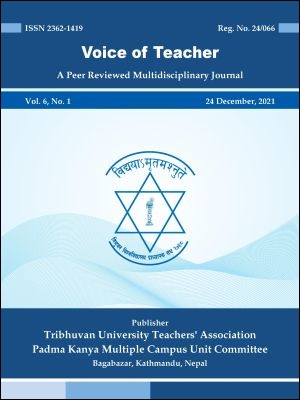Remittance: It’s Impact and Utilization Trend: A Case Study of Returned Migrant Women of Kathmandu Valley
DOI:
https://doi.org/10.3126/vot.v6i1.44076Keywords:
Remittance, Returned Migrant Women (RMW), Women Migrant Worker (WMW), Foreign Labour MigrationAbstract
Foreign Labor migration has lured to Nepalese and huge numbers of youths left the country daily for jobs abroad. Mainly unemployment is the cause that has encouraged people for foreign labour migration on one hand; it too has been a global issue on the other. With globalization and liberalization, the trend of going people from one place to another has intensified. Today, foreign employment among both male and female has become a significant aspect in strengthening the country's economy. The study entitled as Remittance: Its Impact and Utilization Trend (A Case Study of Returned Migrant Women of Kathmandu Valley) has been conducted to analyze the role of remittance. For this noble cause, researcher has adapted exploratory and descriptive research design where purposive sampling has been applied along with proper interpretation of both qualitative and quantitative data. This study has tried to provide a clear picture of contribution of Nepalese Women migrant Workers for supporting their families. The significant factor of remittances and changes felt by the migrants are highlighted throughout the text. Researcher hopes that the description, findings, conclusion and recommendation of the research will be useful to the agencies which are programming on the issues, academicians, students and others and will increase consciousness of the migrant workers, their families and the agencies which support women to send them to foreign lands safely.




